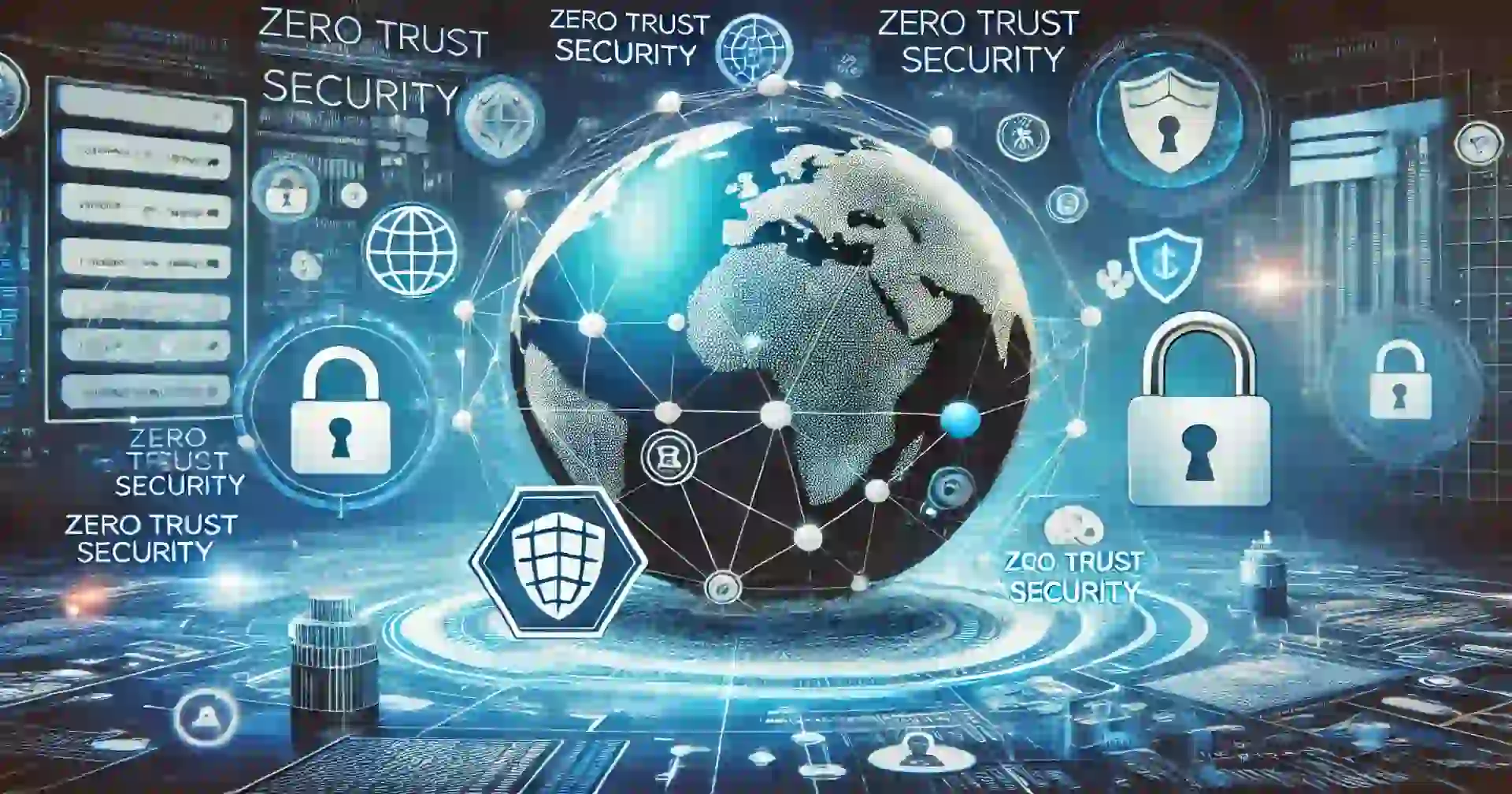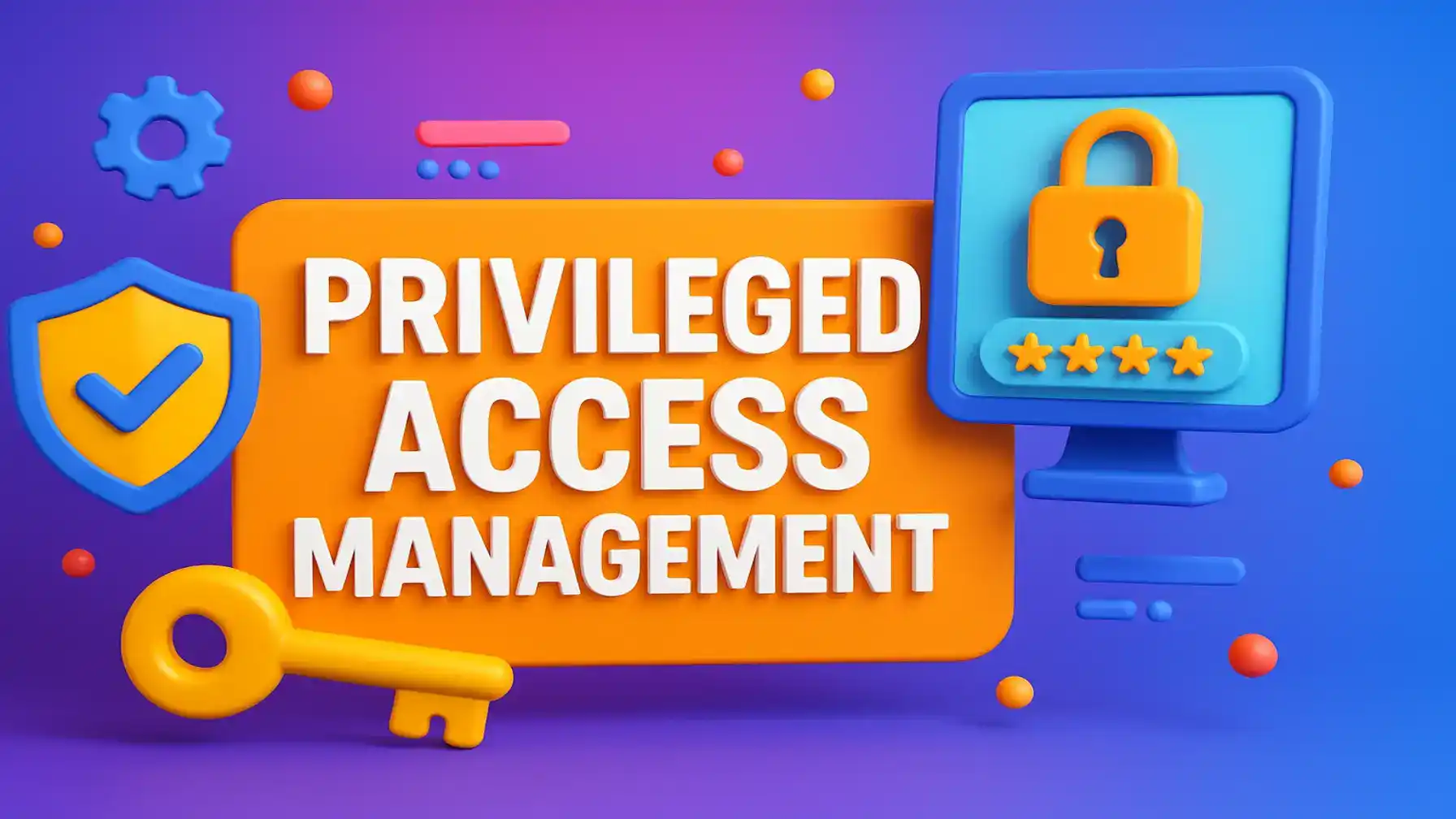In today’s digital landscape, cybersecurity is no longer just the concern of the IT department. It has become a boardroom issue for businesses of all sizes. Cyber threats continue to evolve in both scale and complexity, making traditional perimeter-based security approaches inadequate. This is where Zero Trust Security/ZTS (Trustless Security Model) comes in—a cutting-edge model that redefines how we protect data and systems. The Zero Trust Security framework ensures that no user, device, or system is trusted without proper authentication and validation. This reduces vulnerabilities and significantly improves an organization’s security posture. But what exactly is Zero Trust Security, and why is it rapidly becoming the gold standard for cyber defense?
The Origins of Zero Trust Security (Trustless Security Model):
To fully appreciate Zero Trust Security, it’s helpful to understand how cybersecurity evolved over time. Traditional security models were based on the idea of a “trusted” internal network and an “untrusted” external one. Security measures, such as firewalls, were deployed at the network’s edge to block unauthorized access. The idea was to keep the “bad actors” out while everything inside the perimeter was considered safe. This approach worked effectively during a time when employees worked on-premises, using company-managed devices. Data was stored within physical data centers, making the traditional security model reliable in that era.
Also Read: Extended Detection and Response Enhancing Cybersecurity and Protection
However, the rise of remote work, cloud computing, and the Internet of Things (IoT) has blurred these lines. More and more devices and users operate outside of the traditional corporate network, making perimeter-based security obsolete. In addition, organizations have realized that insider threats—whether malicious or accidental—can easily exploit trust within the perimeter. As a result, the Zero Trust Security model emerged, challenging the assumption that anything inside a network should automatically be trusted.
What is Zero Trust Security?
Zero Trust Security is a proactive approach to cybersecurity that assumes no user, device, or system can be trusted by default—whether inside or outside the network. The cornerstone of Zero Trust is the principle of “never trust, always verify.” It means that access to data and systems is not granted until the identity of the user or device is thoroughly verified. Even after access is granted, it is limited to only the resources necessary for the task, following the principle of least privilege.
Key elements of Zero Trust Security include:
- Identity Verification: Every access attempt must be authenticated. Whether it’s a user logging in, a device connecting to the network, or an application requesting data, each entity must prove its identity every time.
- Least Privilege Access: Users and devices are granted the minimum level of access necessary to perform their duties. This reduces the attack surface and minimizes the damage in case of a breach.
- Micro-Segmentation: Networks are broken down into smaller, isolated zones to limit lateral movement within the network. If an attacker breaches one segment, it doesn’t give them free rein over the entire network.
- Continuous Monitoring: Instead of relying on a one-time verification process, Zero Trust continuously monitors and evaluates users and devices for unusual behavior. This real-time analysis helps identify potential threats more quickly.
Why is a Trustless Security Model Crucial for Today’s Businesses?
As businesses increasingly operate in a digital-first world, the risks associated with cyberattacks are higher than ever. Data breaches are no longer just costly in terms of lost data and revenue—they can severely damage a company’s reputation, undermine customer trust, and lead to legal and regulatory consequences. The adoption of Zero Trust Security has become essential for several reasons:
- Rising Cybersecurity Threats: Over the past decade, cyberattacks have skyrocketed in both number and sophistication. Threat actors are constantly evolving their tactics, using methods like ransomware, phishing, and supply chain attacks to bypass traditional defenses. With Zero Trust Security, businesses can stay one step ahead by continuously verifying access requests and monitoring for suspicious activity.
- Regulatory Compliance and Data Protection: Industries like healthcare, finance, and retail face strict data protection regulations. These include the General Data Protection Regulation (GDPR) and the Health Insurance Portability and Accountability Act (HIPAA). Zero Trust Security helps organizations comply with these regulations by safeguarding sensitive data. It ensures that only authorized individuals can access this data, reducing the risk of non-compliance. By implementing Zero Trust, businesses can effectively meet regulatory requirements while enhancing their overall security posture.
- Remote Work and Cloud Adoption: The shift to remote work and cloud-based services has expanded the attack surface for businesses. Employees are now accessing corporate resources from home networks or public Wi-Fi, often using personal devices. Traditional perimeter-based security solutions struggle to protect against these new dynamics, but Zero Trust Security ensures that every access point, regardless of location, is secure.
- Preventing Insider Threats: Whether intentional or accidental, insider threats can cause as much damage as external ones. With Zero Trust Security, access is tightly controlled, ensuring that even trusted employees have access only to the data they need, and their activity is continuously monitored for unusual behavior.
How Zero Trust Works in Practice?
Implementing Zero Trust Security requires a strategic combination of technology, policy, and process. Here’s how Zero Trust works in real-world scenarios:
- Identity Verification and Access Control: Every user, device, and application must be authenticated before accessing a resource. This includes using strong authentication mechanisms, such as multi-factor authentication (MFA), to validate the legitimacy of access requests. Identity and access management (IAM) solutions play a critical role here, ensuring that only authorized users can access specific resources.
- Micro-Segmentation of Networks: Once authenticated, users and devices are granted access only to the specific part of the network or application they need. Micro-segmentation prevents attackers from moving laterally across the network if they manage to breach a segment, thus containing potential damage.
- Continuous Monitoring and Analytics: Unlike traditional models where authentication is a one-time event, Zero Trust Security emphasizes continuous monitoring of users, devices, and network traffic. Analytics tools powered by machine learning help detect unusual behavior in real time, such as an employee trying to access sensitive files they don’t normally use. When such anomalies are detected, the system can automatically block access or alert security teams for further investigation.
The Core Components of a Zero Trust Architecture:
Building a Zero Trust Security framework involves implementing several key components that work together to secure access to sensitive data and systems:
- Multi-Factor Authentication (MFA): MFA requires users to provide multiple forms of verification—such as a password, a fingerprint, or a text message code—before granting access. By adding this additional layer of protection, MFA makes it much harder for attackers to compromise accounts, even if they manage to steal passwords.
- Least Privilege Access: This principle ensures that users and devices are granted only the access they need to complete their tasks. By limiting permissions to the minimum necessary, organizations can reduce the impact of potential breaches, as attackers won’t have unrestricted access to critical resources.
- Secure Access Service Edge (SASE): As part of Zero Trust, SASE integrates network security services like secure web gateways and cloud-delivered firewall services. SASE provides secure and scalable access to cloud-based resources by connecting users and devices securely, regardless of their physical location.
Zero Trust Security vs. Traditional Perimeter-Based Security:
The major distinction between Zero Trust Security and traditional perimeter-based security lies in their approach to trust. Traditional models assume that anything within the network perimeter can be trusted, while Zero Trust operates under the assumption that every entity—inside or outside—must continuously prove its legitimacy. Let’s look at some key differences:
- Perimeter-Based Security Focuses on Boundaries: Traditional security models build a wall around the network, with the idea that threats are external. Once someone is inside the wall, they are trusted. But this model is outdated in the modern world, where users and devices routinely operate outside the network, and insider threats have become more prominent.
- Zero Trust Shifts from Perimeter to Identity: In Zero Trust Security, the focus shifts from protecting a network’s boundaries to protecting individual identities and resources. Every interaction, even those from within the network, must be authenticated. By focusing on identity, Zero Trust mitigates the risks associated with insider threats and compromised credentials.
- Mitigating Insider Threats: Traditional security often leaves organizations vulnerable to insider threats—whether it’s a disgruntled employee or an unintentional mistake by an authorized user. Zero Trust Security ensures that even trusted insiders are monitored and that their access is limited to only what’s necessary.
Implementing Trustless Security Model in your Organization:
If you’re considering implementing Zero Trust Security, it’s important to know where to begin and how to address common challenges along the way. The journey to Zero Trust is an ongoing process that requires careful planning and execution. Here’s how to get started:
- Assess Your Current Security Posture: Before implementing Zero Trust, organizations need to evaluate their existing security infrastructure. Identify weak points, such as outdated authentication methods, insufficient access controls, or unmonitored devices, and begin addressing these gaps.
- Establish Strong Identity and Access Management (IAM): IAM is at the heart of Zero Trust Security. By implementing robust IAM practices—such as enforcing MFA and using identity verification technologies—organizations can ensure that access is granted only to legitimate users and devices.
- Start Small and Scale Gradually: Implementing Zero Trust doesn’t have to be an all-or-nothing endeavor. Start by applying Zero Trust principles to your most critical assets—such as sensitive data or high-risk applications—and gradually extend these practices across the entire organization.
- Overcome Challenges with Automation and AI: One of the challenges of Zero Trust Security is the need for continuous monitoring and verification. To manage this effectively, businesses can leverage AI and automation tools that help identify threats in real time and streamline access management processes.

Zero Trust in Cloud Environments:
As more organizations migrate to the cloud, traditional security models are becoming less effective. Zero Trust Security provides a way to secure cloud environments by continuously verifying every interaction with cloud-based resources. Since cloud platforms operate in shared environments, ensuring the security of data and applications requires a model that doesn’t assume any implicit trust. Here’s how Zero Trust enhances cloud security:
- Secure Access to Cloud Resources: By using identity-based access controls, Zero Trust Security ensures that only authorized users and devices can access cloud resources. This prevents unauthorized access and limits exposure to potential breaches.
- Data Protection in Multi-Cloud Environments: Many businesses use multiple cloud providers, each with its own set of security policies. Zero Trust Security unifies these policies by applying the same access controls and verification processes across all platforms, ensuring consistent protection.
- Ensuring Compliance in the Cloud: With Zero Trust Security, businesses can meet regulatory requirements for data privacy and protection, even in complex cloud environments. Continuous monitoring and auditing ensure that compliance is maintained at all times.
Zero Trust for Remote Workforces:
The COVID-19 pandemic accelerated the shift to remote work, making traditional security solutions inadequate for the new normal. With employees accessing corporate networks from various locations and devices, Zero Trust Security has become indispensable for securing remote workforces. Here’s why:
- Securing Access from Anywhere: In a world where employees are no longer confined to the office, Zero Trust Security ensures that every access request is authenticated, regardless of where the user is connecting from. This is critical for preventing unauthorized access from compromised devices or unsecured networks.
- Minimizing Risks from Personal Devices: Many remote employees use personal devices to access corporate resources, which can introduce security risks. Zero Trust Security verifies the security posture of these devices before granting access, reducing the likelihood of breaches caused by compromised endpoints.
- Enforcing Policy Compliance Remotely: With Zero Trust, businesses can enforce consistent security policies across all users and devices, even those operating outside the corporate network. This ensures that remote workers adhere to the same security standards as on-premises employees.
The Role of Artificial Intelligence and Machine Learning in Zero Trust:
Artificial intelligence (AI) and machine learning (ML) are crucial to Zero Trust Security, especially for threat detection and response. Cyber threats are becoming increasingly sophisticated. AI and ML help organizations stay ahead by automating various tasks. These include continuous monitoring, access control, and real-time threat detection, making security processes more efficient. Here’s how AI and ML enhance Zero Trust Security:
- AI-Driven Threat Detection: AI can analyze large volumes of network traffic and user behavior in real time, identifying patterns that may indicate a cyberattack. By leveraging machine learning algorithms, organizations can detect anomalies, such as unusual login attempts or unauthorized data access, that would be difficult for human analysts to spot.
- Automation of Routine Security Tasks: Zero Trust Security requires constant monitoring of users, devices, and network activity. AI-powered tools can automate these tasks, freeing up security teams to focus on more complex threats. For example, AI can automatically revoke access for compromised accounts or alert security teams to suspicious activity.
- Enhancing Security with Predictive Analytics: Machine learning models can predict potential vulnerabilities or attacks based on past behavior. This allows organizations to take proactive steps to mitigate risks before they turn into full-blown security incidents.
Trustless Security Model (ZTS) and Compliance:
Meeting regulatory requirements is a top priority for businesses, especially in industries like healthcare, finance, and government. Zero Trust Security closely aligns with compliance standards by tightly controlling access and protecting sensitive data. Here’s how Zero Trust helps businesses meet compliance goals:
- GDPR, HIPAA, and Other Regulatory Frameworks: Many regulations require businesses to implement strict access controls and ensure the confidentiality of sensitive data. Zero Trust Security supports these requirements by enforcing strong identity verification, limiting access to only authorized users, and continuously monitoring for unauthorized activity.
- Auditing and Reporting: Zero Trust Security includes continuous monitoring and logging of access events, making it easier for organizations to generate the audit trails required for compliance. These logs can be used to demonstrate that access to sensitive data is being properly controlled and monitored.
- Data Protection and Privacy: Zero Trust Security ensures that personal data is only accessible by those with a legitimate need, helping organizations meet privacy regulations. This is especially important for businesses that handle sensitive customer information, such as financial data or medical records.
Common Myths About Zero Trust Security
Despite its growing popularity, Zero Trust Security is sometimes misunderstood. Here are a few common myths about Zero Trust, along with the reality:
- Myth: “Zero Trust is too complex to implement.”
Reality: While implementing Zero Trust Security does require careful planning, it’s not as complex as many assume. By starting with a phased approach and focusing on high-priority assets, organizations can gradually adopt Zero Trust principles without overwhelming their IT teams. - Myth: “Zero Trust will slow down business operations.”
Reality: Zero Trust Security is designed to enhance security without compromising business agility. With the right technologies in place—such as AI and automation—Zero Trust can actually streamline processes by automating routine security tasks and reducing the risk of downtime caused by cyberattacks. - Myth: “Zero Trust only benefits large enterprises.”
Reality: Zero Trust Security is scalable and can be implemented by organizations of all sizes. In fact, small and medium-sized businesses may benefit the most from Zero Trust, as they are often less equipped to handle the aftermath of a data breach.
Real-World Examples of Zero Trust Implementation:
Several organizations have successfully adopted Zero Trust Security to protect their data and systems. Here are a few notable examples:
- Google’s BeyondCorp Initiative: One of the most famous examples of Zero Trust Security in action is Google’s BeyondCorp project. In response to a series of cyberattacks, Google developed BeyondCorp to allow employees to securely access corporate resources from anywhere without relying on traditional VPNs. This model has since become a benchmark for other companies looking to implement Zero Trust Security.
- Healthcare Organizations: Healthcare providers often targeted by ransomware attacks now use Zero Trust Security to protect patient data and comply with HIPAA regulations. By implementing strong identity verification and access controls, these organizations have significantly reduced the risk of data breaches.
- Financial Institutions: Banks and financial services companies have adopted Zero Trust Security to safeguard sensitive financial information. With the rise of digital banking, these institutions face growing threats from cybercriminals. Zero Trust helps prevent unauthorized access to customer accounts and protects against fraud.
Conclusion:
In today’s increasingly complex threat landscape, Zero Trust Security offers a powerful defense against cyberattacks. It continuously verifies every user and device, ensuring strict security at every access point. By restricting access to only the necessary resources and monitoring activity in real time, Zero Trust Security provides comprehensive protection. As more businesses adopt remote work, cloud computing, and digital transformation, this security model remains vital. It will continue playing a critical role in protecting sensitive data and systems. Adopting Zero Trust today equips organizations to tackle tomorrow’s cybersecurity challenges more effectively.
FAQs:
1. What industries benefit the most from Zero Trust Security?
Industries handling sensitive data—such as healthcare, finance, government, and retail—greatly benefit from Zero Trust Security. It provides strong access control and continuous monitoring. This helps protect critical information from potential threats and unauthorized access.
2. How does Zero Trust improve endpoint security?
Zero Trust Security continuously verifies the security status of devices and endpoints. It ensures they meet compliance requirements before granting access to sensitive resources. This reduces the risk of breaches from compromised devices by enforcing strict access control and monitoring.
Also Read: How to Choose Between Direct and Forced Shutdown?
3. Can small businesses implement Zero Trust Security?
Absolutely. Zero Trust Security is scalable and adaptable, making it feasible for small businesses to implement. Even with limited resources, small businesses can adopt basic Zero Trust principles like multi-factor authentication and least privilege access to strengthen their security posture.
4. How long does it take to implement Zero Trust?
The timeline for implementing Zero Trust Security varies depending on the size and complexity of the organization. A phased approach, starting with critical assets and expanding gradually, can yield immediate benefits while spreading the effort over time.
5. Does Zero Trust eliminate the need for firewalls?
No, firewalls are still an important component of cybersecurity. However, Zero Trust Security adds an extra layer of protection to your systems. It enforces strict access controls and continuous verification. This applies even to users and devices operating inside the firewall, enhancing overall security.. Firewalls and Zero Trust work together to create a more secure environment.








